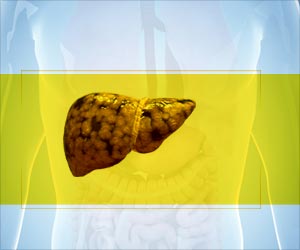A study links insulin resistance to over 30 diseases and highlights an increased risk of early death in women.

- Insulin resistance linked to 31 diseases, increasing risk of 26 conditions
- Women with higher insulin resistance face an 11% higher risk of early death
- Conditions like sleep disorders, gout, and heart disease are strongly linked to insulin resistance
Insulin resistance is associated with 31 diseases and all-cause mortality in females in the UK Biobank: a prospective cohort study
Go to source). Insulin resistance occurs when the body’s cells fail to respond properly to insulin, a hormone responsible for allowing cells to absorb glucose from the blood. This resistance causes glucose to build up in the bloodstream, leading to elevated blood sugar levels, a hallmark of type 2 diabetes. Though the exact causes of insulin resistance are still being studied, excess weight and a sedentary lifestyle are believed to be major contributors.
Insulin resistance increases the risk of over 30 diseases, and in women, raises the chance of early death by 11%. #medindia #diabetescare #insulin’
Study of Insulin Resistance Using UK Biobank Data
To explore the effects of insulin resistance, Ms. Jing Wu from Shandong Provincial Hospital in China and her team analyzed data from the UK Biobank. The UK Biobank houses health data on over 500,000 people, allowing researchers to study genetic, lifestyle, and medical factors over a long period.The study focused on 429,159 participants aged 40 to 69 years. Using blood sugar and fat measurements, including cholesterol, the researchers calculated each participant's TyG index, a well-established measure of insulin resistance. These scores ranged from 5.87 to 12.46 units, with an average score of 8.71.
Links Between Insulin Resistance and 31 Diseases
Over a median follow-up period of 13 years, the study found insulin resistance to be associated with 31 diseases. The findings are as follows:Higher risk of 26 diseases: Insulin resistance was linked to a higher likelihood of conditions such as sleep disorders, bacterial infections, pancreatitis, gout, and cardiovascular diseases.
Lower risk of 5 diseases: Surprisingly, a higher TyG index was associated with a reduced risk of diseases like
For instance, every one-unit increase in insulin resistance was found to:
- Increase the risk of sleep disorders by 18%.
- Raise the likelihood of bacterial infections by 8%.
- Amplify the risk of pancreatitis by 31%.
Impact on Women: A Higher Risk of Early Death
One of the most concerning findings from the study is that insulin resistance appears to have a unique impact on women’s health. The analysis revealed that for every one-unit increase in insulin resistance, women had an 11% higher chance of dying from any cause during the study period. This association was not observed in men, suggesting potential sex-based differences in how insulin resistance affects overall mortality.Among the diseases linked to insulin resistance, the following stood out as particularly significant:
- Type 2 Diabetes: A known outcome of insulin resistance, with a 166% increased risk.
- Gout: The study found a 65% higher likelihood of developing gout.
- Dyslipidaemia: A 61% increase in the risk of abnormal blood fat levels.
- Sciatica: A novel finding, with a 10% higher risk linked to insulin resistance.
Participants with higher insulin resistance tended to be older, male, smokers, physically inactive, and obese. These findings reinforce the importance of modifiable lifestyle factors in managing insulin resistance. Ms. Wu emphasized that public awareness of these factors could empower individuals to take proactive measures to improve their metabolic health.
Implications for Disease Prevention and Management
The study’s findings open new doors for early intervention strategies aimed at reducing the risk of diseases associated with insulin resistance. Identifying individuals with higher insulin resistance allows healthcare providers to focus on preventive measures, such as encouraging regular physical activity and a balanced diet low in refined carbohydrates and added sugars.The research presented at the EASD conference underscores the critical role insulin resistance plays in a wide range of diseases. It also highlights the importance of early detection, especially in women, where the risk of early death is significantly higher. Addressing modifiable factors such as weight, activity level, and smoking habits can help mitigate the risks associated with insulin resistance, improving long-term health outcomes.
Reference:
- Insulin resistance is associated with 31 diseases and all-cause mortality in females in the UK Biobank: a prospective cohort study - (https://www.easd.org/media-centre/home.html#!resources/b-insulin-resistance-is-associated-with-31-diseases-and-all-cause-mortality-in-females-in-the-uk-biobank-a-prospective-cohort-study-b)
Source-Medindia















